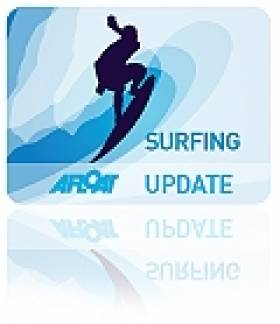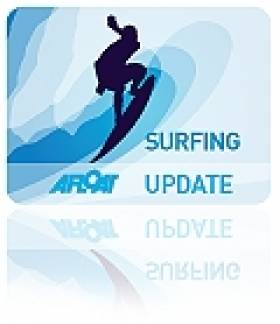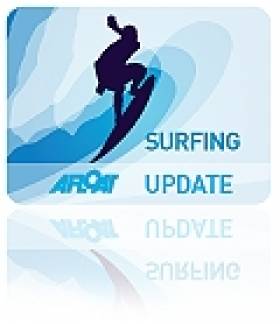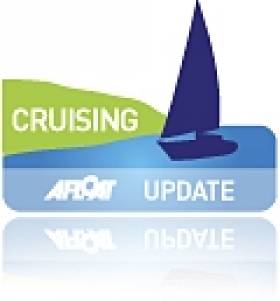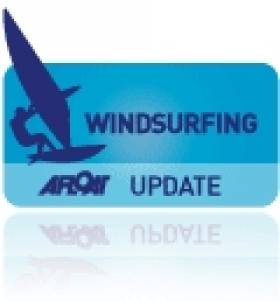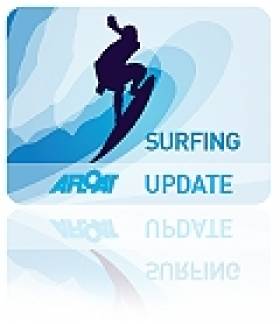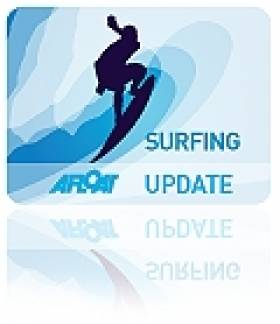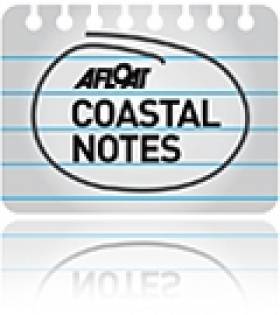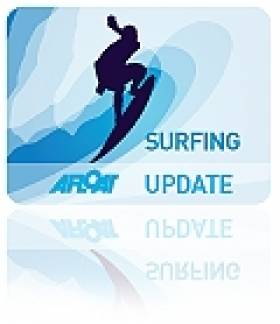Displaying items by tag: Surfing
Spectacular Winter Surfing Captured On Video At Home And Abroad
#Surfing - Iceland, of all places, may not be known as a surfing hot-spot - but Irish wave rider Eoin McCarthy Deering has made something of the freezing swell, as the video above demonstrates.
The clip, via IrishCentral, was captured using one of the now ubiquitous GoPro portable HD cameras that enable extreme sports enthusiasts to record footage right from the centre of the action.
Closer to home, Epic TV reports on yet more incredible sessions at Mullaghmore Head and Aileens, this time by visiting surf pros Kohl Christiansen and Aritz Aranburu - see the videos below.
Christiansen took on the giant waves off Sligo - which are featured once again among the nominees for the Billabong XXL Big Wave Awards - while Aranburu headed to Clare with British rider Tom Lowe for a run at the famed surf break.
Kohl Christiansen at Mullaghmore Part 1:
Kohl Christiansen at Mullaghmore Part 2:
Aritz Aranburu at Aileens:
South African Surfer Stranded In Shark-Ridden Seas
#Surfing - A South African surfer has survived a terrifying ordeal after being stranded alone in shark-infested waters in the Indian Ocean.
As Channel 4 News reports, 50-year-old Brett Archibald had been with friends on an overnight boat crossing from mainland Indonesia to the surfing grounds of the Mentawai Islands when he blacked out from seasickness and fell overboard in rough weather.
Unfortunately for Archibald, his friends were either asleep or suffering from seasickness themselves below deck, and several hours passed before he was noticed missing.
In the meantime, he was stranded alone in the water, surrounded by sharks and jellyfish and attacked by seagulls.
Archibald described his 28 hours adrift at sea as "insane" and said he nearly drowned eight times, but he continued to swim and tread water while, unbeknownst to him, rescue services were being mobilised for a large-scale search operation.
Channel 4 News has much more on the story HERE.
Irish Surfer, Snapper Up For 'Tube Of The Year' Gong
#Surfing - Ireland is represented for another year running on the shortlist for the Billabong XXL Big Wave Awards to be presented next month.
According to The Irish Times, Clare surfing pro Peter Conroy and Portrush photographer Roo McCrudden are in the running for the 'tube of the year' gong, which could net them a cool $5,000 in prize money.
McCrudden captured the stunning shot of Conroy riding the tube formed by an enormous cresting wave Mullaghmore in Sligo - a break that proved similarly attention-worthy for last year's 'biggest wave' nominee Ollie O'Flaherty.
Conroy told the paper that the magic wave "came out of nowhere" and that he didn't even realise just how big it was till he saw McCrudden's photographs later.
The Irish Times has more on the story HERE.
Shipwreck Highlights Danger of Portugal's Winter Winds
#Shipwreck - Two are reported dead after a shipwreck yesterday (Wednesday 10 April) on the Portuguese coast in what is a reminder to all cruisers of the dangers of strong winds in the region.
According to Portuguese language newspaper Publico, the deceased include one of the five crew of the German-flagged cruiser Meri Tuuli, and a member of the Portuguese maritime police attending to the incident who went into the water when his RIB overturned.
Eight people in total were admitted to hospital after the incident in which the Meri Tuuli - an X-442 yacht perated by a local sailing school - capsized on Cabedelo beach in Figueira da Foz, near Oporto.
Two are reported to be "wounded with traumatic injuries" while another two showed symptoms of hypothermia after exposure to the water.
Figueira da Foz is a popular cruising destination along the Iberian coast, but its port is vulnerable to the high swells that attract surfers to the area, sometimes closing altogether.
A source close to Afloat.ie described most harbour entrances along Portugal's west coast as "lethal during of after strong winter south or southwest winds" which are made stronger as air rushes into the valleys at river mouths as sea breezes.
First Irish Woman To Windsurf Infamous Hawaiian Wave
#Windsurfing - History has been made in Hawaii with the first Irish woman ever to have windsurfed the infamous 'Jaws' surfing break, as The Irish Times reports.
Twenty-six-year-old Katie McAnena, a doctor from Galway, demonstrated perfect timing as she leapt into the water from an overhanging cliff.
An experienced windsurfer with four Irish women's championships to her name, McAnena told the paper how she maintained caution on the wave and stayed on its shoulder to ride it out.
“The sound and the feeling of it going through my bones was extraordinary, an out-of- body experience,” she said. “I haven’t managed to sleep since.” The Irish Times has more on the story HERE.
It's been an exciting time lately for Ireland's women waverers, as just six months ago northwest surfing scion Easkey Britton became the first woman ever to surf in the waters off Iran.
Shore Shots Film Fest Is 'Roaring Success'
#Surfing - Ireland's first ever surfing themed film festival has been hailed as a "roaring success" all round, according to surf website Magicseaweed.
The Shore Shots Irish Surf Film Festival - which took over the Light House Cinema and the Generator Hostel in Dublin's Smithfield last weekend, as previously reported on Afloat.ie - featured the Irish premieres of five new big-screen surfing films, including the 3D epic Storm Chasers.
But it was the Short Film section attracted the most excitement and plaudits over the two days, with an edit of Fergal 'Ferg' Smith - tackling the biggest and best waves Ireland has to offer over two years - claiming top prize in the category.
Others of note in the shortlist include bodyboarder Peter Clyne and some truly exciting POV footage from Dylan Scott - shot with a single GoPro and put together on the smallest of budgets.
North Of Nowhere from Peter Clyne - Outer Cells on Vimeo.
trendynewatrocity2 - By Dylan Stott from MSW on Vimeo.
Magicseaweed has much more on happenings from the festival HERE.
Ireland's First Surf Film Festival Comes To Smithfield
#Surfing - Ireland's first ever surfing themed film festival is set to take place in Dublin later this month.
The Shore Shots Irish Surf Film Festival 2013 will take over the Light House Cinema and Generator Hostel in Smithfield on the weekend of 23-24 March with the Irish premieres of five new big-screen surfing titles.
"We’ve got all the latest footage from the global surf scene, award-winning movies and tales of travel and adventure from men and women who have devoted their lives to exploring and sharing the water around us," say the organisers.
The festival kicks off with the premiere of Here & Now, the work of more than 25 filmmakers and surfers who worked together to document the world of surfing in a single 24-hour period.
It's followed the the first Irish showing of the epic 3D adventure Storm Surfers, a documentary following two best friends on their quest to hunt down and ride the biggest and most dangerous waves in Australia.
The second day will see showings of 180 South, which retraces the epic 1968 journey of Yvon Chouinard and Doug Tompkins to Patagonia; North of the Sun, documenting two surfers extreme experience throughout nine months of winter in a remote part of Norway; and Come Hell or High Water, which tells the remarkable history of bodysurfing.
Both days will also feature an exhibition of stunning surf photography captured by some of the best in the business, a short film competition - and a proper party atmosphere!
Find out more at the official festival website or the Shore Shots Facebook page.
'Whale Vomit' Could Be Worth Thousands To Clare Surfing Pair
#Ambergris - The idea of 'whale vomit' is surely off-putting to most, but to high-end perfume companies it's worth more than gold - much to the delight of two Irish surfers who believe they've found a lump of the stuff.
The Irish Daily Star, via IrishCentral, reports that Alan Davey and Brian Miller discovered the turnip-sized lump of what appears to be whale excrement on the beach at the popular surfing haunt of Lahinch on the Co Clare coast.
And if it turns out to be the product of a sperm whale, it might well contain the valuable substance known as ambergris - produced in their digestive tract, and traditionally used as a key ingredient in perfumes - and could fetch the pair a cool €50,000.
A similar find on a beach at Morecambe in Lancashire last month could be worth as much as €115,000 to its finder, according to The Guardian.
Doolin Pier Gets Green Light from An Bord Pleanala
#doolinpier – Clare County Council today (Wednesday, 6 March 2013) welcomed the announcement by An Bord Pleanala of its decision to give the go ahead for the construction of a new pier in the North Clare coastal village of Doolin.
The Council said it has reviewed the terms of the Bord's decision and will be meeting the project consultants with a view to commencing the tendering process in the near future.
Reacting to today's announcement, Mayor of Clare Councillor Pat Daly said: "I am delighted that the green light has finally been given for this vitally important piece of infrastructure following years of open debate and discussion on what the best way forward should be. I wish to compliment Clare County Council and its officials for facilitating the process and ensuring that everyone's voice was heard. The Pier will bring increasing numbers of people to County Clare considering access to the Aran Islands from the County will be greatly enhanced once the project is completed."
Tom Coughlan, Clare County Manager said An Bord Pleanala's decision today was "the result of a comprehensive proposal submitted by the Council and extensive consultation with users of the pier as well as the local community."
He continued: "Clare County Council has invested considerable time and resources into ensuring that the Doolin Pier project is one that benefits all users of the existing pier. Once completed, this project will have significant, positive economic and social consequences for the people of North Clare and the wider region. For example, the construction phase of the project will create jobs as will the increase in business that will arise as a result of the Pier's completion."
Tom Tiernan, Senior Engineer and Doolin Pier Project Manager commented: "I wish to pay tribute to the Council Consultants, led by Malachy Walsh and Partners, who have guided the project from its inception through the various stages of planning, including the preparation of the Environmental Impact Statement (EIS) which ultimately facilitated An Bord Pleanala's decision today."
"He added: "The provision of this new pier will have a hugely positive impact on the operations of Ferry operators, fishermen and the local search and rescue unit, who have been finding it increasingly difficult to launch their boats at low water levels."
"The next stage of the Pier project is construction. We will shortly be meeting with the project consultants with a view to getting a tender process underway as soon as possible. We anticipate that the project will be completed during early 2015," concluded Mr. Tiernan.
Leitrim Surfer Learns the Ropes for Reality TV Show
#Surfing - A young surfer from Kinlough talks to the Leitrim Observer about his experiences taking part in the RTÉ series Big Wave Bootcamp, currently showing Fridays at 5pm on RTÉ Two.
Seventeen-year-old Daniel McGlynn was among eight teenagers who were given just three weeks to become expert surfers under the instruction of American surfing professional Ken Bradshaw.
After an audition process for the reality TV series last summer, McGlynn and his fellow teens were flown half-way round the world to Hawaii. But despite the idyllic surroundings, the group faced a punishing training schedule.
“We were in bed at 9 o’clock and up at 6am. We would then train for at least four hours in the day," says McGlynn. "Everything was so much tougher, the waves could be up to 6ft or 7ft tall, even to paddle out on the surf board was a challenge as the current was so much stronger!"
An occasional surfer for almost a decade, McGlynn says he really stepped up his game under the tutelage of Bradshaw.
"He literally taught us everything he knows about the sport, everything. He also rode the biggest wave ever recorded, a massive 86ft in Oahu, Hawaii.”
The Leitrim Observer has more on the story HERE.


























